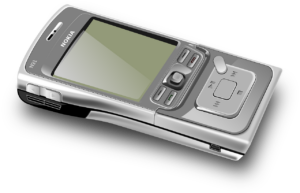In the ever-evolving landscape of technology, few inventions have had as profound an impact on our daily lives as the smartphone. At the heart of these pocket-sized marvels lies a crucial component that often goes unnoticed but plays a pivotal role in their functionality—the processor.
Here’s everything you need to know about the history of the first smartphone processor and the technological milestones that paved the way for the devices we rely on today.
The Genesis: IBM Simon Personal Communicator (1992)
The concept of a handheld device that could do more than just make calls began to take shape in the late 1980s and early 1990s. The IBM Simon Personal Communicator, released in 1992, is widely regarded as the first smartphone.
While its processing capabilities were modest compared to today’s standards, it marked the beginning of a new era. The Simon featured a 16MHz processor, 1 MB of RAM, and a 4.5-inch monochrome touchscreen—a far cry from the powerful processors and vibrant displays we have today.
The Rise of ARM Architecture
As smartphones started gaining popularity in the early 2000s, the need for energy-efficient processors became evident. ARM (Acorn RISC Machine) architecture emerged as a game-changer, providing a balance between performance and power efficiency.
Companies like Qualcomm, Texas Instruments, and Samsung adopted ARM architecture for their mobile processors, setting the stage for the explosive growth of the smartphone industry.
Nokia and the Birth of the Symbian Era

In the early 2000s, Nokia dominated the mobile phone market, and their smartphones played a crucial role in shaping the industry. The Nokia 7650, released in 2002, featured a 104 MHz ARM 9 processor and ran on the Symbian operating system. This marked the beginning of the Symbian era, with Nokia leading the way in smartphone innovation.
The Advent of Apple’s iPhone
In 2007, Apple revolutionized the smartphone landscape with the introduction of the iPhone. At its core was the Apple-designed A1 processor, a 412 MHz ARM 11 chip. This marked a significant shift, as Apple began to design its own processors, optimizing them for seamless integration with their hardware and software.
Android’s Influence
With the rise of Android in 2008, powered by Google, a new era of diversity in smartphone processors began. Manufacturers like Samsung, Qualcomm, and MediaTek entered the scene, producing a wide range of processors to cater to different market segments. This diversity fueled healthy competition, pushing the boundaries of performance and innovation.
The Present and Beyond
Today’s smartphones boast processors with multiple cores, clock speeds in the gigahertz range, and advanced technologies like artificial intelligence integration. Companies like Apple, Qualcomm, and MediaTek continue to push the envelope, striving for faster, more efficient, and feature-rich processors.